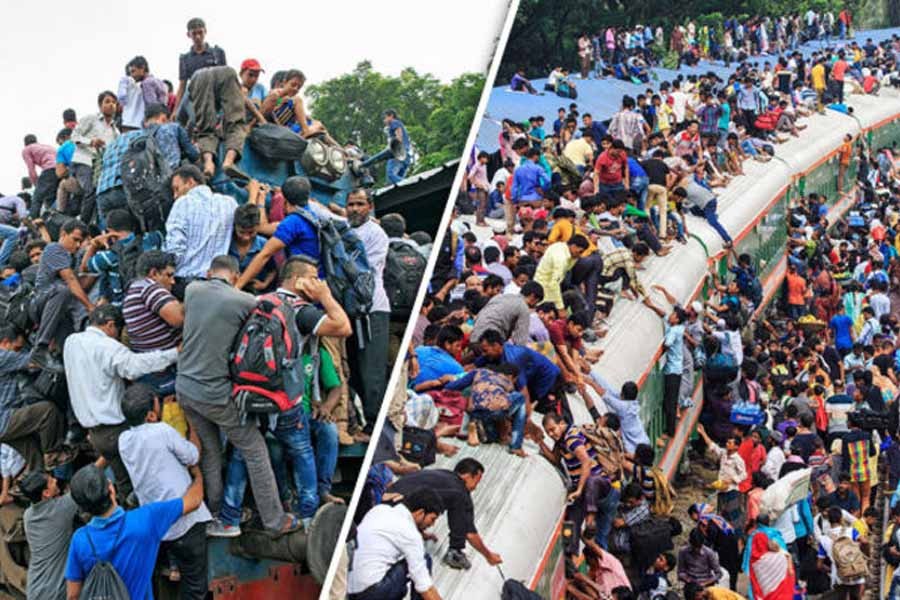Passengers without ticket are often seen step off railway carriages precariously as the train approaches a station. The speed of the train at that time remains slow, at which the daredevils can attempt dodging the ticket-checkers at the station. Not everyone embarking on this potentially hazardous attempt can come out unhurt. Spectres of grievous injuries and even fatalities normally stalk these acts. The recent newspaper photograph of a middle-aged man disembarking from a still-speeding train could not but shock readers. An added element of fright has made the scene quite troubling. As the photo shows, with the desperate passenger barely touching the ground, another train speeds past it in opposite direction on the tracks adjacent to it.
The appalling spectacle reminds one of the morbidly death-defying passengers in the capital getting off nearly full-speed buses on the mid-road. Compared to the railway-linked scenes, those on the city roads are tinged with semblances of relief. After decades of recklessness on the part of both vehicle drivers and passengers, the traffic spectacle could be coped with to some extent. After a brief countrywide student agitation over stopping rash driving, a discipline of sorts could be put in place in the large cities. The traffic police authorities, too, put in their utmost efforts to streamline the movement of motorised vehicles. To the disappointment of people willing to see a positive outcome of all these remedial efforts, Dhaka's traffic chaos reverted to its old style characterised by defiance, willful law-flouting and passengers' nonchalance.
Blood-curdling jaywalking could not be stopped. Wriggling through median fences on busy roads; or scaling waist-high dividers on flyovers continues unabated. After a gap of over three months, that witnessed myriad attempts to bring order to the roads, Dhaka's traffic network is found filled with the same old ills and irregularities.
A punishing hopelessness arises from the spectacles of ills-ridden roads in Dhaka and the other large cities. Coming to Dhaka, we can point the finger at the failures of the traffic management and road transport authorities. Besides, there are dozens of government and non-government organisations that monitor the road situation. In spite of their virtual failures, road safety-related civil society groups hardly stop putting pressure on the traffic movement watchdogs -- with a view to reminding them of their responsibility. Against the backdrop of this seemingly non-stop activities related to road discipline, the railway sector may find itself left in the lurch. Who'll herd the railway jaywalkers into the designated passages meant for helping people cross railway tracks safely? Eerily speaking, a great number of level-crossings have been in place without cross-bars, and even guards.
That a section of people will keep trying to go through the open crossings in the face of approaching trains is implied. Dozens of fatal accidents, train-motor collision in particular, occur in the country every year -- not to speak of the individual deaths. Moreover, which railway authorities are entitled to stop passengers from jumping off carriages as a train enters the station area? In the cities and towns, railway law enforcers can try to intervene in such practices. But there are busy stations in remote rural areas. These stations and their peripheral spaces continue to be everybody's property. Nobody is there to prevent even infirm passengers from getting off a speeding train.


